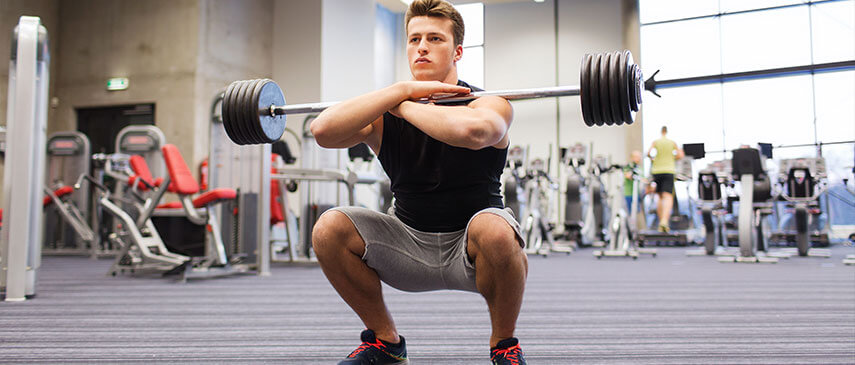The Difference Between Front Squats and Back Squats and How to do Them Both Correctly

Who doesn’t love a good squat? Long ago, squats were an exercise that was known only to elite athletes who were looking to push their physical fitness level to the limits, but now they are one of the most commonly practiced forms of weightlifting.
There are a lot of rumors out there about squats, though. For example, there are many who believe that squats are bad for the knees, or that doing too many squats will cause you to slow down and gain too much bulk to be truly athletic. Those who valued the merits of speed and cardiovascular activity tended to avoid squats so as not to become too encumbered. If you still believe any of these myths, it is time to put them to bed once and for all. Squats are a great exercise for building core and lower body strength, for improving speed, and even supporting improved dexterity, making it possible to jump higher, faster and farther than before.
Of course, if you are going to start doing squats, then you need to be careful about doing them the right way. Using bad form when it comes to doing squats could result in injury. There are two different types of squats, and it is important to know the difference between the two and how to do both of them correctly.
Table of Contents
ToggleThe Front Squat
To do a front squat, the first step is to place the barbell across the front of your shoulders, below the neck. Place your fingertips underneath the barbell, just to the outside of your shoulders. This will cause your elbows to make a sharp point. Keep your chest erected and your core tight, and focus on keeping all movement at the bend in your hips and knees as you lower yourself toward the floor. Once your thighs are parallel to the ground, hold and then slowly return to an upright position.
The Back Squat
A back squat is fundamentally similar to the front squat thanks to the squatting motion itself. The goal is to move your body in the same type of motion, bending at your hips and knees until your thighs are parallel with the ground, and then returning to an upright position soon after. The difference between a front squat and a back squat really comes down to where you hold the weight.
To do a proper back squat, you should hold the barbell over your shoulders, just behind your neck. It is important that the weight is not resting on your neck at all, but instead is being held on your shoulders. Attempting to lift too much weight and accidentally relying on your neck instead of your shoulders could lead to severe injury.
You can also do front or back squats without weights or with hand weights or kettlebells. If you are going to use any weight at all, make sure that you are comfortable resting the weight on your shoulders as you do the squat. You should be able to manage the additional weight as you squat. If you are just getting started, doing a squat without weight is a good way to become familiar with the movement and to prepare your muscles for the activity without adding too much intensity at once.
Learning how to use the proper techniques for exercises like front and back squats is important. This is the type of information that you can learn through physical therapy, especially if you are looking to build muscle strength and range of motion following an injury or surgical intervention.
For more information about using proper technique with strength-building activities, contact our Agility Physical Therapy.
